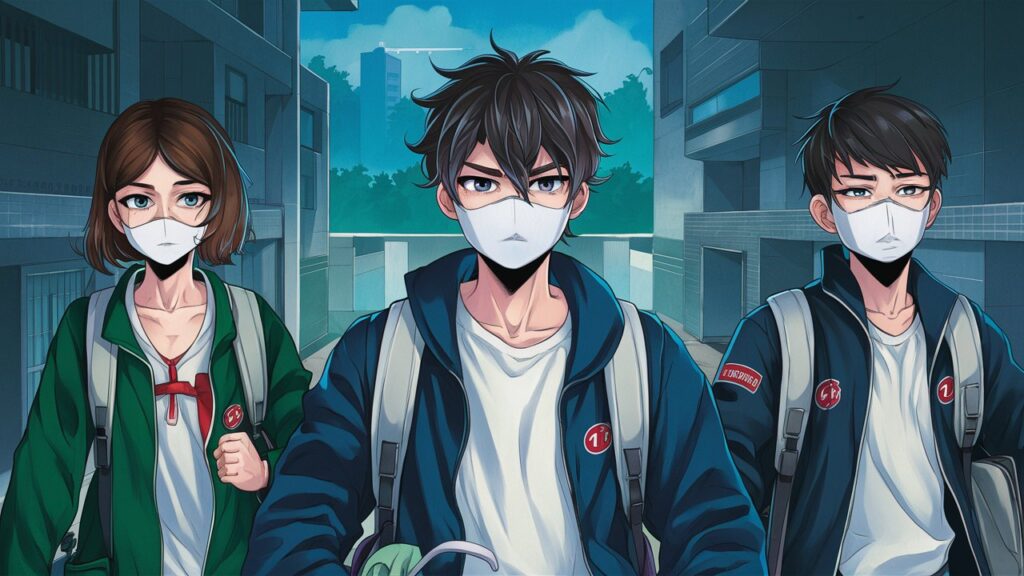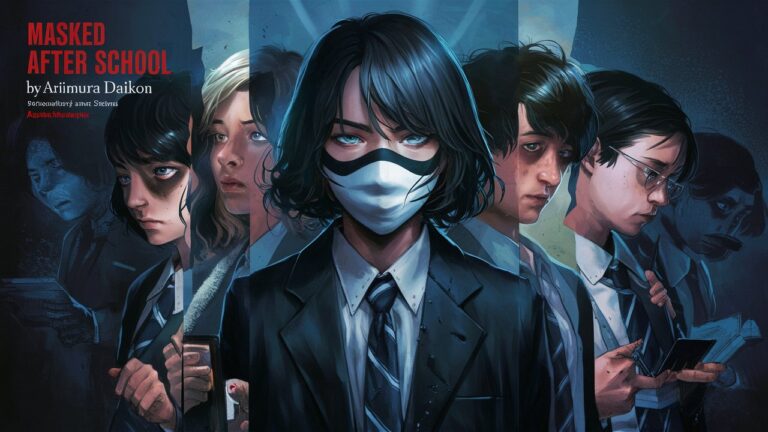Introduction: The Enigmatic World of Masked After School
Arimura Daikon’s Masked After School is a gripping narrative that blurs the lines between secrecy and self-discovery, set against the backdrop of a seemingly ordinary high school. The story follows a protagonist whose dual life—masked by day and unmasked by night—serves as a metaphor for the universal adolescent struggle to reconcile societal expectations with personal truth. With its atmospheric tension and psychological depth, the work has captivated readers, inviting them to question the masks they wear in their own lives. This article explores the key themes, characters, and narrative techniques that make Masked After School a standout piece of contemporary literature, while addressing common questions about its enigmatic premise.
The Premise: A Masked Protagonist in a World of Dual Identities
At the heart of Masked After School is its protagonist, a high school student who dons a literal mask to navigate daily life. By day, they blend into the crowd, adhering to the rigid norms of their school environment. By night, however, the mask comes off, revealing a hidden world of rebellion, introspection, and clandestine encounters. Arimura Daikon uses this duality to explore themes of anonymity and authenticity. The mask serves not only as a physical barrier but also as a psychological shield, protecting the protagonist from societal judgment while paradoxically isolating them from genuine connection. The tension between these two identities drives the plot forward, creating a narrative rich with suspense and emotional complexity.
Themes of Identity and Conformity in Masked After School
Identity is the cornerstone of Masked After School. The protagonist’s struggle mirrors the universal teenage experience of feeling trapped between societal expectations and personal desires. Arimura Daikon critiques the pressure to conform, using the school setting as a microcosm of broader cultural norms. The mask symbolizes the performative nature of adolescence—how young people often hide their true selves to fit in. Yet, as the story progresses, the protagonist begins to question whether the mask is a prison or a tool of empowerment. This theme resonates deeply in an era dominated by social media, where curated personas often overshadow genuine selves.
The Role of Secondary Characters: Mirrors and Foils
The supporting cast in Masked After School plays a critical role in amplifying the protagonist’s internal conflict. Classmates, teachers, and enigmatic strangers each reflect different facets of the protagonist’s psyche. For instance, the antagonist—a rule-obsessed student council president—embodies the oppressive weight of societal norms, while a rebellious transfer student represents the allure of unfiltered freedom. These characters are not mere archetypes; they are carefully crafted to challenge the protagonist’s worldview. Through their interactions, Arimura Daikon underscores the idea that identity is shaped not in isolation, but through the friction between opposing forces.
Narrative Style: Atmosphere and Symbolism
Arimura Daikon’s prose is steeped in atmospheric detail, transforming the school into a character in its own right. Dimly lit hallways, locked classrooms, and the eerie quiet of after-school hours create a haunting backdrop for the protagonist’s dual existence. Symbolism abounds: the mask itself, recurring motifs like clocks (symbolizing the pressure of time), and mirrors (representing self-reflection) deepen the story’s psychological layers. The author’s use of fragmented timelines and unreliable narration further immerses readers in the protagonist’s disorienting journey, blurring the line between reality and perception.
Cultural Impact and Reader Reception
Since its release, Masked After School has sparked discussions about the pressures faced by modern youth. Critics praise its unflinching portrayal of mental health struggles, particularly anxiety and dissociation, which are rarely addressed so candidly in mainstream literature. The work has also drawn comparisons to classics like The Catcher in the Rye and modern manga like Tokyo Ghoul, bridging generational and cultural divides. Readers often cite the story’s ambiguous ending as a masterstroke, leaving them to ponder whether the protagonist’s final unmasking is an act of liberation or surrender.
Conclusion: The Lingering Questions of Masked After School
Masked After School is more than a coming-of-age tale—it is a meditation on the masks we all wear and the courage it takes to remove them. Arimura Daikon’s nuanced storytelling invites readers to confront their own fears of judgment and authenticity. By leaving key questions unanswered, the narrative lingers in the mind, challenging audiences to seek their own truths. In a world where identity is increasingly fluid yet paradoxically policed, this work remains a poignant reminder of the power—and peril—of unmasking.

Frequently Asked Questions (FAQs)
1. What genre does Masked After School belong to?
The work blends elements of psychological drama, mystery, and literary fiction. Its focus on internal conflict and symbolic imagery places it in the realm of contemporary speculative fiction.
2. Why does the protagonist wear a mask?
The mask serves as a metaphor for societal conformity. It allows the protagonist to navigate social expectations while hiding their true self, though this duality becomes increasingly unsustainable.
3. Is Masked After School part of a series?
As of now, it is a standalone novel. However, its open-ended conclusion has fueled speculation about potential sequels or spin-offs.
4. What age group is the book intended for?
While marketed toward young adults, its themes of identity and mental health resonate with readers of all ages.
5. How does Arimura Daikon’s background influence the story?
Though private about their personal life, Arimura’s works often explore isolation and societal critique, suggesting a deep familiarity with these themes.
6. Where can I purchase or read Masked After School?
The novel is available in major bookstores and online platforms, with translations in multiple languages. Check regional availability for digital or physical copies.
This article provides a comprehensive exploration of Masked After School, ensuring readers leave with both an understanding of its narrative depth and lingering questions to ponder.
